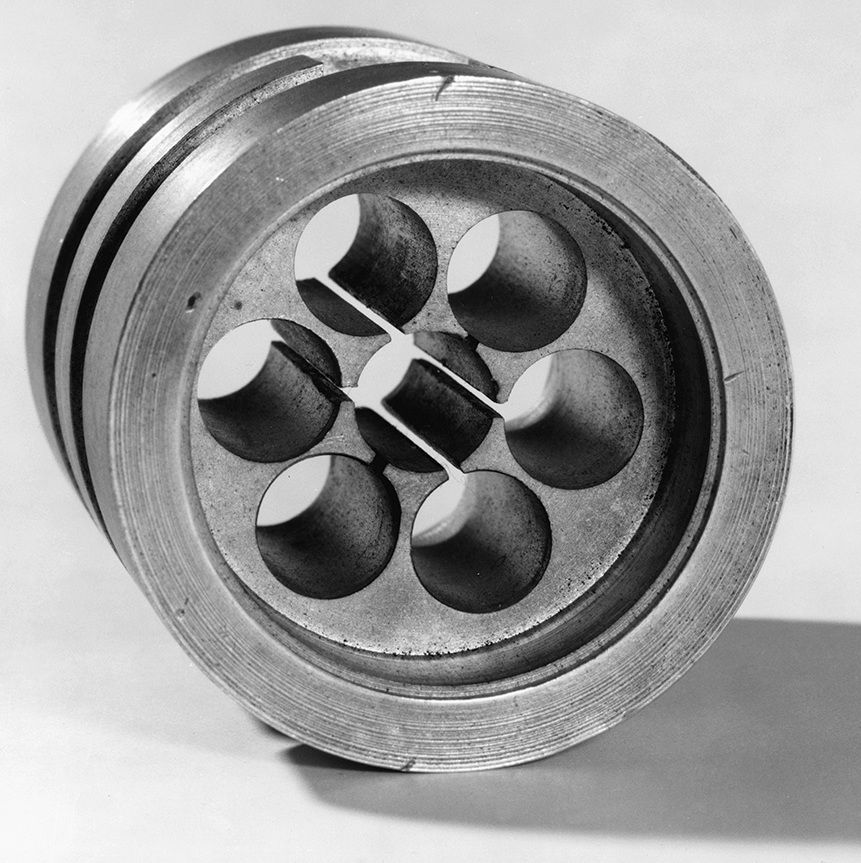Harry Boot on:
[Wikipedia]
[Google]
[Amazon]
Henry Albert Howard Boot (29 July 1917 – 8 February 1983) was an English physicist who with Sir John Randall and James Sayers developed the


 Henry Boot was born in
Henry Boot was born in
cavity magnetron
The cavity magnetron is a high-power vacuum tube used in early radar systems and currently in microwave ovens and linear particle accelerators. It generates microwaves using the interaction of a stream of electrons with a magnetic field whi ...
, which was one of the keys to the Allied victory in the Second World War
World War II or the Second World War, often abbreviated as WWII or WW2, was a world war that lasted from 1939 to 1945. It involved the vast majority of the world's countries—including all of the great powers—forming two opposi ...
.
Biography


 Henry Boot was born in
Henry Boot was born in Birmingham
Birmingham ( ) is a City status in the United Kingdom, city and metropolitan borough in the metropolitan county of West Midlands (county), West Midlands in England. It is the second-largest city in the United Kingdom with a population of 1. ...
and attended King Edward's School, Birmingham
King Edward's School (KES) is an independent day school for boys in the British public school tradition, located in Edgbaston, Birmingham. Founded by King Edward VI in 1552, it is part of the Foundation of the Schools of King Edward VI in Bir ...
and the University of Birmingham
The University of Birmingham (informally Birmingham University) is a Public university, public research university located in Edgbaston, Birmingham, United Kingdom. It received its royal charter in 1900 as a successor to Queen's College, Birmingha ...
. While working on his PhD the war broke out. His professor Mark Oliphant
Sir Marcus Laurence Elwin Oliphant, (8 October 1901 – 14 July 2000) was an Australian physicist and humanitarian who played an important role in the first experimental demonstration of nuclear fusion and in the development of nuclear weapon ...
had seen the klystron
A klystron is a specialized linear-beam vacuum tube, invented in 1937 by American electrical engineers Russell and Sigurd Varian,Pond, Norman H. "The Tube Guys". Russ Cochran, 2008 p.31-40 which is used as an amplifier for high radio frequen ...
at Stanford University but it produced insufficient power to be useful as a radar
Radar is a detection system that uses radio waves to determine the distance ('' ranging''), angle, and radial velocity of objects relative to the site. It can be used to detect aircraft, ships, spacecraft, guided missiles, motor vehicles, we ...
transmitter. He assigned John Randall and Boot to the problem. By late February 1940, they had invented the much more powerful cavity magnetron
The cavity magnetron is a high-power vacuum tube used in early radar systems and currently in microwave ovens and linear particle accelerators. It generates microwaves using the interaction of a stream of electrons with a magnetic field whi ...
which was fitted in an experimental radar by May 1940.
James Sayers later refined the magnetron still further by strapping alternate cavities. As with many British inventions of this period, the magnetron was provided to the US for free when they entered World War II
World War II or the Second World War, often abbreviated as WWII or WW2, was a world war that lasted from 1939 to 1945. It involved the vast majority of the world's countries—including all of the great powers—forming two opposing ...
. Initially Boot and Randall were awarded £50 each for the magnetron for "improving the safety of life at sea", but in 1949 Boot, Randall and Sayers received a £36,000 prize for their work.
After a brief time at British Thomson-Houston, Rugby, in the latter years of the war, Boot returned to Birmingham as the Nuffield Research Fellow. After some work on nuclear physics, Boot returned to magnetrons and after the war built a cyclotron
A cyclotron is a type of particle accelerator invented by Ernest O. Lawrence in 1929–1930 at the University of California, Berkeley, and patented in 1932. Lawrence, Ernest O. ''Method and apparatus for the acceleration of ions'', filed: Jan ...
at Birmingham.
In 1948 he joined the Scientific Civil Service, and was appointed Principal Scientific Officer (PSO) at Services Electronic Research Laboratories, in Baldock
Baldock ( ) is a historic market town and unparished area in the local government district of North Hertfordshire in the county of Hertfordshire, England, where the River Ivel rises. It lies north of London, southeast of Bedford, and north n ...
in Hertfordshire, where he undertook research on microwaves, magnetrons, plasma physics and lasers.
He enjoyed sailing, owning two boats at Salcombe in Devon. He frequently went down there to the family holiday home with his wife Penelope, and his two sons, Christopher and Nicholas.
He retired in 1977 and died in Cambridge on 8 February 1983.
References
{{DEFAULTSORT:Boot, Harry 1917 births People educated at King Edward's School, Birmingham 1983 deaths English physicists Radar pioneers Alumni of the University of Birmingham People from Birmingham, West Midlands Members of HM Scientific Civil Service Civil servants in the Admiralty 20th-century Royal Navy personnel 20th-century English scientists 20th-century British physicists 20th-century British civil servants